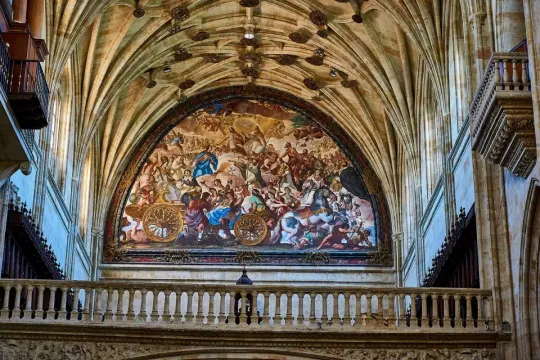Explore the legacy of famous Spanish painters

The impact of Spanish painters on the art world
Spain has long been a breeding ground for artistic talent, producing some of the most influential painters in history. The impact of Spanish painters on the art world cannot be overstated. Their unique styles and innovative techniques have pushed the boundaries of artistic expression, inspiring generations of artists to come. From the vibrant use of color to the exploration of new artistic movements, Spanish painters have left an indelible mark on the art world.
One of the most notable periods in the history of Spanish art is the Golden Age, a period of great artistic prosperity that stretched from the end of the 16th century to the beginning of the 17th century. At this time, Spanish painters such as El Greco, Diego Velázquez and Francisco Goya established themselves as precursors, creating masterpieces that would forever change the course of art history. Their works continue to be celebrated and studied to this day, as they represent the pinnacle of Spanish artistic achievement.
Overview of the Golden Age of Spanish Painting
The Golden Age of Spanish painting is a period of great artistic achievement and innovation. It was during this period that Spain produced some of its most iconic painters, whose works continue to captivate audiences around the world. This period saw the rise of various artistic movements, including Mannerism and Baroque, as well as the emergence of individual artistic geniuses who left an indelible mark on the art world.
One of the most influential painters of the Golden Age is El Greco. Born in Greece but proven in Spain, El Greco's visionary style and unique approach to painting set him apart from his contemporaries. His elongated figures and dramatic use of color created a sense of strangeness in his works, which made them instantly recognizable and highly sought after.
Francisco Goya: From Court Painter to Social Commentator
Francisco Goya was a painter whose works spanned a wide variety of genres, from portraits to landscapes to social commentary. Born in 1746 in Fuendetodos, Spain, Goya began his career as a court painter, painting portraits of the Spanish aristocracy. However, as a witness to the social and political upheavals of his time, Goya changed his artistic direction and became a powerful social commentator through his art.
Goya's most famous series of works, "The Disasters of War", depicts the horrors of the Peninsular War and the years of political turmoil that followed in Spain. The series consists of 82 prints, each powerfully and hauntingly depicting the atrocities committed during the war. Goya's uncompromising portrayal of the brutality of war and his critique of the political establishment earned him a place in history as one of the most important social commentators of his time.
Pablo Picasso: the modernization of Spanish art
Pablo Picasso is perhaps the most famous Spanish painter of all time. Born in 1881 in Malaga, Spain, Picasso is best known for his role in developing Cubism, a revolutionary art movement that challenged traditional notions of perspective and representation. Picasso's innovative approach to art and his ability to push the boundaries of artistic expression made him a true icon of the art world.
Picasso's works are characterized by their fragmented forms, multiple perspectives, and bold use of color. His most famous painting, "Guernica", is a powerful portrayal of the horrors of war. Painted in reaction to the bombardment of the town of Guernica during the Spanish Civil War, the painting is a stark reminder of the devastating consequences of conflict. Picasso's ability to convey emotions and meanings through his art speaks to his genius and his lasting impact on the art world.